Latest Electricity News - Energy Policy
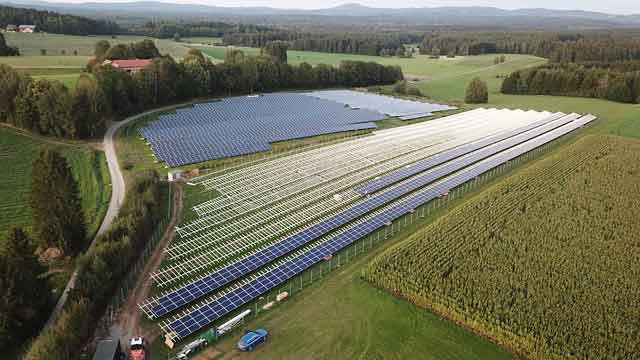
U.S. Speeds Up Permitting for Geothermal Energy
Geothermal Emergency Permitting accelerates BLM approvals on public lands via categorical exclusions for exploratory drilling and geophysical surveys, boosting domestic energy security, cutting timelines by up to a year, and streamlining low-impact reviews.
Key Points
A policy fast-tracking geothermal exploration on public lands, using BLM categorical exclusions to cut review delays.
✅ Categorical exclusions speed exploratory drilling approvals
✅ Cuts permitting timelines by up to one year
✅ Focused on public lands to enhance energy security
In a significant policy shift, the U.S. Department of the Interior has introduced emergency permitting procedures aimed at expediting the development of geothermal energy projects. This initiative, announced on May 30, 2025, is part of a broader strategy to enhance domestic energy production, seen in proposals to replace Obama's power plant overhaul and reduce reliance on foreign energy sources.
Background and Rationale
The decision to fast-track geothermal energy projects comes in the wake of President Donald Trump's declaration of a national energy emergency, which faces a legal challenge from Washington's attorney general, on January 20, 2025. This declaration cited high energy costs and an unreliable energy grid as threats to national security and economic prosperity. While the emergency order includes traditional energy resources such as oil, gas, coal, and uranium and nuclear energy resources, it notably excludes renewable sources like solar, wind, and hydrogen from its scope.
Geothermal energy, which harnesses heat from beneath the Earth's surface to generate electricity, is considered a reliable and low-emission energy source. However, its development has been hindered by lengthy permitting processes and environmental reviews, with recent NEPA rule changes influencing timelines. The new emergency permitting procedures aim to address these challenges by streamlining the approval process for geothermal projects.
Key Features of the Emergency Permitting Procedures
Under the new guidelines, the Bureau of Land Management (BLM) has adopted categorical exclusions to expedite the review and approval of geothermal energy exploration on public lands. These exclusions allow for faster permitting of low-impact activities, such as drilling exploratory wells and conducting geophysical surveys, without the need for extensive environmental assessments.
Additionally, the BLM has proposed a new categorical exclusion that would apply to operations related to the search for indirect evidence of geothermal resources. This proposal is currently open for public comment and, if finalized, would further accelerate the discovery of new geothermal resources on public lands.
Expected Impact on Geothermal Energy Development
The implementation of these emergency permitting procedures is expected to significantly reduce the time and cost associated with developing geothermal energy projects. According to the Department of the Interior, the new measures could cut permitting timelines by up to a year for certain types of geothermal exploration activities.
This acceleration in project development is particularly important given the untapped geothermal potential in regions like Nevada, which is home to some of the largest undeveloped geothermal resources in the country.
Industry and Environmental Reactions
The geothermal industry has largely welcomed the new permitting procedures, viewing them as a necessary step to unlock the full potential of geothermal energy. Industry advocates argue that reducing permitting delays will facilitate the deployment of geothermal projects, contributing to a more reliable and sustainable energy grid amid debates over electricity pricing changes that affect market signals.
However, the exclusion of solar and wind energy projects from the emergency permitting procedures has drawn criticism from some environmental groups. Critics argue that a comprehensive approach to energy development should include all renewable sources, not just geothermal, to effectively address climate change, as reflected in new EPA pollution limits for coal and gas power plants, and promote energy sustainability.
The U.S. government's move to implement emergency permitting procedures for geothermal energy development marks a significant step toward enhancing domestic energy production and reducing reliance on foreign energy sources. By streamlining the approval process for geothermal projects, the administration aims to accelerate the deployment of this reliable and low-emission energy source. While the exclusion of other renewable energy sources from the emergency procedures has sparked debate, especially after states like California halted an energy rebate program during a federal freeze, the focus on geothermal energy underscores its potential role in the nation's energy future.
Related News
Sign Up for Electricity Forum’s News Service
Weekly updates from our FREE News Service—get the latest news, breakthrough technologies, and expert insights, delivered straight to your inbox.
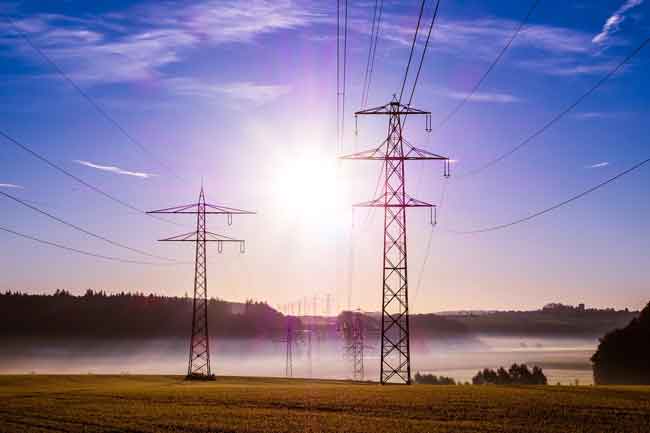
Hungary's Quiet Alliance with Russia in Europe's Energy Landscape
Hungary's Russian Energy Dependence underscores EU tensions, as TurkStream gas flows, discounted imports, and pipeline reliance challenge sanctions, energy security, diversification, and decoupling goals amid Ukraine war pressures and bloc unity concerns.
Key Points
It is Hungary's reliance on Russian gas and oil via TurkStream, complicating EU sanctions and energy independence.
✅ 85% gas, 60% oil imports from Russia via TurkStream pipelines.
✅ Discounted contracts seldom cut bills; security cited by Budapest.
✅ EU decoupling targets hampered; sanctions leverage and unity erode.
Hungary's energy policies have positioned it as a notable outlier within the European Union, particularly in the context of the ongoing geopolitical tensions stemming from Russia's invasion of Ukraine. While the EU has been actively working to reduce its dependence on Russian energy sources through an EU $300 billion plan to dump Russian energy, Hungary has maintained and even strengthened its energy ties with Moscow, raising concerns about EU unity and the effectiveness of sanctions.
Strategic Energy Dependence
Hungary's energy infrastructure is heavily reliant on Russian supplies. Approximately 85% of Hungary's natural gas and more than 60% of its oil imports originate from Russia. This dependence is facilitated through pipelines such as TurkStream, which delivers Russian gas to Hungary via Turkey and the Balkans amid Europe's energy nightmare over price volatility and security. In 2025, Hungary's gas imports through TurkStream are projected to reach 8 billion cubic meters, a significant increase from previous years. These imports are often secured at discounted rates, although such savings may not always be passed on to Hungarian consumers.
Political and Economic Considerations
Prime Minister Viktor Orbán has been a vocal critic of EU sanctions against Russia and has consistently blocked EU initiatives aimed at providing military aid to Ukraine, even as Ukraine leans on power imports to keep the lights on. His government argues that Russia's military capabilities make it an unyielding adversary and that a ceasefire would only solidify its territorial gains. Orbán's stance has led to Hungary's isolation within the EU on matters related to the conflict in Ukraine.
Economically, Hungary's reliance on Russian energy has been justified by the government as a means to maintain low energy prices for consumers and ensure energy security. However, critics argue that this strategy undermines EU efforts to achieve energy independence and reduces the bloc's leverage over Russia amid a global energy war marked by price hikes and instability.
EU's Response and Challenges
The European Union has set ambitious goals to reduce its reliance on Russian energy, aiming to halt imports of Russian natural gas by the end of 2027 and prohibit new contracts starting in 2025 while exploring gas price cap strategies to contain market volatility. However, Hungary's continued imports of Russian energy complicate these efforts. The TurkStream pipeline, in particular, has become a focal point in discussions about the EU's energy strategy, as it enables ongoing Russian gas exports to Europe despite the bloc's broader decoupling initiatives.
Hungary's actions have raised concerns among other EU member states about the effectiveness of the sanctions regime and the potential for other countries to exploit similar loopholes. There are calls for stricter policies, including banning spot gas purchases and enforcing traceability of gas origins, and consideration of emergency measures to limit electricity prices to ensure genuine energy independence and reduce overreliance on external suppliers.
Hungary's steadfast energy relationship with Russia presents a significant challenge to the European Union's collective efforts to reduce dependence on Russian energy sources. While Hungary argues that its energy strategy is in the national interest, it risks undermining EU solidarity and the bloc's broader geopolitical objectives. As the EU continues to navigate its energy transition and response to the ongoing conflict in Ukraine, including energy ceasefire violations reported by both sides, Hungary's position will remain a critical point of contention within the union.
Related News
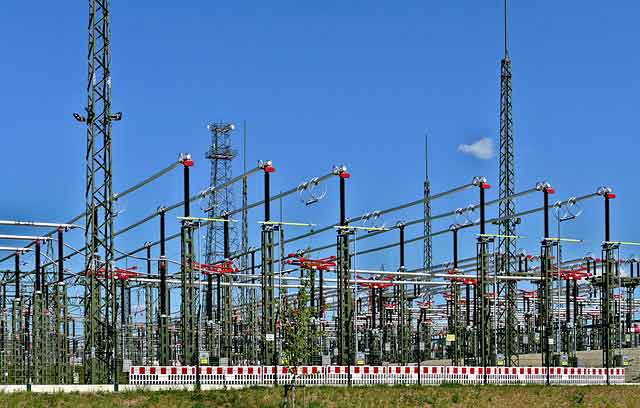
Paris Finalises Energy Roadmap for 2025–2035 with Imminent Decree
France 2025–2035 Energy Roadmap accelerates carbon neutrality via renewables expansion, energy efficiency, EV adoption, heat pumps, hydrogen, CCS, nuclear buildout, and wind and solar targets, cutting fossil fuels and emissions across transport, housing, industry.
Key Points
A national plan to cut fossil use and emissions, boost renewables, and scale efficiency and clean technologies.
✅ Cuts fossil share to 30% by 2035 with efficiency gains
✅ Scales solar PV and wind; revives nuclear with EPR 2
✅ Electrifies transport and industry with EVs, hydrogen, CCS
Paris is on the verge of finalising its energy roadmap for the period 2025–2035, with an imminent decree expected to be published by the end of the first quarter of 2025. This roadmap is part of France's broader strategy to achieve carbon neutrality by 2050, aligning with wider moves toward clean electricity regulations in other jurisdictions.
Key Objectives of the Roadmap
The energy roadmap outlines ambitious targets for reducing greenhouse gas emissions across various sectors, including transport, housing, food, and energy. The primary goals are:
-
Reducing Fossil Fuel Dependency: Building on the EU's plan to dump Russian energy, the share of fossil fuels in final energy consumption is to fall from 60% in 2022 to 42% in 2030 and 30% in 2035.
-
Enhancing Energy Efficiency: A target of a 28.6% reduction in energy consumption between 2012 and 2030 is set, focusing on conservation and energy efficiency measures.
-
Expanding Decarbonised Energy Production: The roadmap aims to accelerate the development of renewable energies and the revival.
Sector-Specific Targets
-
Transport: The government aims to cut emissions by 31, focusing on the growth of electric vehicles, increasing public transport, and expanding charging infrastructure.
-
Housing: Emissions from buildings are to be reduced by 44%, with plans to replace 75% of oil-fired and install 1 million heat pumps.
-
Agriculture and Food: The roadmap includes measures to reduce emissions from agriculture by 9%, promoting organic farming and reducing the use of nitrogen fertilizers.
-
Industry: A 37% reduction in emissions is targeted through the use of electricity, biomass, hydrogen, and CO₂ capture and storage technologies informed by energy technology pathways outlined in ETP 2017.
Renewable Energy Targets
The roadmap sets ambitious targets for renewable energy production that align with Europe's ongoing electricity market reform efforts:
-
Photovoltaic Power: A sixfold increase in photovoltaic power between 2022
-
Offshore Wind Power: Reaching 18 gigawatts up from 0.6 GW
-
Onshore Wind Power: Doubling capacity from 21 GW to 45 GW over the same period.
-
Nuclear Power: The commissioning of the evolutionary power and the construction of six EPR 2 reactors, underpinned by France's deal on electricity prices with EDF to support long-term investment, with the potential for eight more.
Implementation and Governance
The final version of the roadmap will be adopted by decree, alongside a proposed electricity pricing scheme to address EU concerns, rather than being enshrined in law as required by the Energy Code. The government had previously abandoned the energy-climate planning. The decree is expected to be published at the end of the Multiannual Energy Program (PPE) and in the second half of the third National Low-Carbon Strategy (SNBC).
Paris's finalisation of its energy roadmap for 2025–2035 marks a significant step towards achieving carbon neutrality by 2050. The ambitious targets set across various sectors reflect a comprehensive approach to reducing greenhouse gas emissions and transitioning to a more sustainable energy system amid the ongoing EU electricity reform debate shaping market rules. The imminent decree will provide the legal framework necessary to implement these plans and drive the necessary changes across the country.
Related News
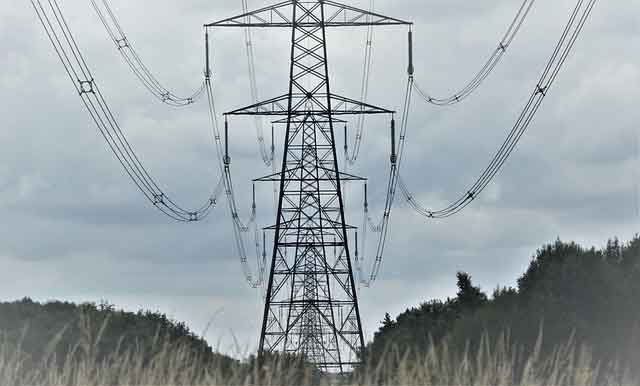
Washington AG Leads Legal Challenge Against Trump’s Energy Emergency
Washington-Led Lawsuit Against Energy Emergency challenges President Trump's executive order, citing state rights, environmental reviews, permitting, and federal overreach; coalition argues record energy output undermines emergency claims in Seattle federal court.
Key Points
Multistate suit to void Trump's energy emergency, alleging federal overreach and weakened environmental safeguards.
? Challenges executive order's legal basis and scope
? Claims expedited permitting skirts environmental reviews
? Seeks to halt emergency permits for non-emergencies
In a significant legal move, Washington State Attorney General Nick Brown has spearheaded a coalition of 15 states in filing a lawsuit against President Donald Trump's executive order declaring a national energy emergency. The lawsuit, filed in federal court in Seattle on May 9, 2025, challenges the legality of the emergency declaration, which aims to expedite permitting processes for fossil fuel projects in pursuit of an energy dominance vision by bypassing key environmental reviews.
Background of the Energy Emergency Declaration
President Trump's executive order, issued on January 20, 2025, asserts that the United States faces an inadequate and unreliable energy grid, particularly affecting the Northeast and West Coast regions. The order directs federal agencies, including the Army Corps of Engineers and the Department of the Interior, to utilize "any lawful emergency authorities" to facilitate the development of domestic energy resources, with a focus on oil, gas, and coal projects. This includes expediting reviews under the Clean Water Act, Endangered Species Act, the National Environmental Policy Act, and the National Historic Preservation Act, potentially reducing public input and environmental oversight.
Legal Grounds for the Lawsuit
The coalition of states, led by Washington and California, argues that the emergency declaration is an overreach of presidential authority, echoing disputes over the Affordable Clean Energy rule in federal courts. They contend that U.S. energy production is already at record levels, and the declaration undermines state rights and environmental protections. The lawsuit seeks to have the executive order declared unlawful and to halt the issuance of emergency permits for non-emergency projects.
Implications for Environmental Protections
Critics of the energy emergency declaration express concern that it could lead to significant environmental degradation. By expediting permitting processes, including geothermal permitting, and reducing public participation, the order may allow projects to proceed without adequate consideration of their impact on water quality, wildlife habitats, and cultural resources. Environmental advocates argue that such actions could set a dangerous precedent, enabling future administrations to bypass essential environmental safeguards under the guise of national emergencies, even as the EPA advances new pollution limits for coal and gas plants to address the climate crisis.
Political and Legal Reactions
The Trump administration defends the executive order, asserting that the president has the authority to declare national emergencies and that the energy emergency is necessary to address perceived deficiencies in the nation's energy infrastructure and potential electricity pricing changes debated by industry groups. However, legal experts suggest that the broad application of emergency powers in this context may face challenges in court. The outcome of the lawsuit could have significant implications for the balance of power between state and federal authorities, as well as the future of environmental regulations in the United States.
The legal challenge led by Washington State Attorney General Nick Brown represents a critical juncture in the ongoing debate over energy policy and environmental protection. As the lawsuit progresses through the courts, it will likely serve as a bellwether for future conflicts between state and federal governments regarding the scope of executive authority and the preservation of environmental standards, amid ongoing efforts to expand uranium and nuclear energy programs nationwide. The outcome may set a precedent for how national emergencies are declared and managed, particularly concerning their impact on state governance and environmental laws.
Related News
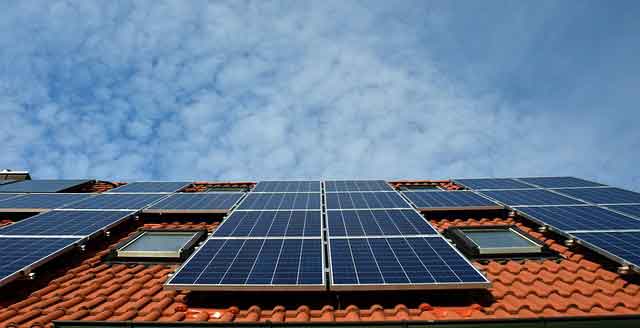
California’s Solar Power Cost Shift: A Misguided Policy Threatening Energy Equity
California Rooftop Solar Cost Shift examines PG&E rate hikes, net metering changes, and utility infrastructure spending impacts on low-income households, distributed generation, and clean energy adoption, potentially raising bills and undermining grid resilience.
Key Points
A claim that rooftop solar shifts fixed grid costs to others; critics cite PG&E rates, avoided costs, and impacts.
✅ PG&E rates outpace national average, underscoring cost drivers.
✅ Net metering cuts risk burdening low- and middle-income homes.
✅ Distributed generation avoids infrastructure spend and grid strain.
California is grappling with soaring electricity prices across the state, with Pacific Gas & Electric (PG&E) rates more than double the national average and increasing at an average of 12.5% annually over the past six years. In response, Governor Gavin Newsom issued an executive order directing state energy agencies to identify ways to reduce power costs. However, recent policy shifts targeting rooftop solar users may exacerbate the problem rather than alleviate it.
The "Cost Shift" Theory
A central justification for these pricing changes is the "cost shift" theory. This theory posits that homeowners with rooftop solar panels reduce their electricity consumption from the grid, thereby shifting the fixed costs of maintaining and operating the electrical grid onto non-solar customers. Proponents argue that this leads to higher rates for those without solar installations.
However, this theory is based on a flawed assumption: that PG&E owns 100% of the electricity generated by its customers and is entitled to full profits even for energy it does not deliver. In reality, rooftop solar users supply only about half of their energy needs and still pay for the rest. Moreover, their investments in solar infrastructure reduce grid strain and save ratepayers billions by avoiding costly infrastructure projects and reducing energy demand growth, aligning with efforts to revamp electricity rates to clean the grid as well.
Impact on Low- and Middle-Income Households
The majority of rooftop solar users are low- and middle-income households. These individuals often invest in solar panels to lower their energy bills and reduce their carbon footprint. Policy changes that undermine the financial viability of rooftop solar disproportionately affect these communities, and efforts to overturn income-based charges add uncertainty about affordability and access.
For instance, Assembly Bill 942 proposes to retroactively alter contracts for millions of solar consumers, cutting the compensation they receive from providing energy to the grid, raising questions about major changes to your electric bill that could follow if their home is sold or transferred. This would force those with solar leases—predominantly lower-income individuals—to buy out their contracts when selling their homes, potentially incurring significant financial burdens.
The Real Drivers of Rising Energy Costs
While rooftop solar users are being blamed for rising electricity rates, calls for action have mounted as the true culprits lie elsewhere. Unchecked utility infrastructure spending has been a significant factor in escalating costs. For example, PG&E's rates have increased rapidly, yet the utility's spending on infrastructure projects has often been criticized for inefficiency and lack of accountability. Instead of targeting solar users, policymakers should scrutinize utility profit motives and infrastructure investments to identify areas where costs can be reduced without sacrificing service quality.
California's approach to addressing rising electricity costs by targeting rooftop solar users is misguided. The "cost shift" theory is based on flawed assumptions and overlooks the substantial benefits that rooftop solar provides to the grid and ratepayers. To achieve a sustainable and equitable energy future, the state must focus on controlling utility spending, promoting clean energy access for all, especially as it exports its energy policies across the West, and ensuring that policies support—not undermine—the adoption of renewable energy technologies.
Related News
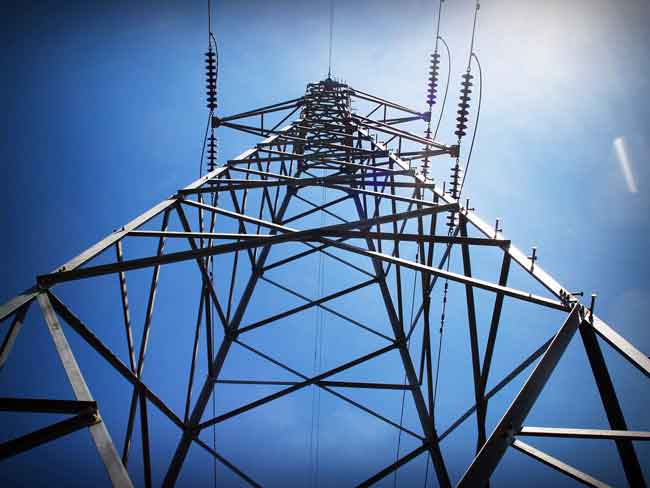
Russia and Ukraine Accuse Each Other of Violating Energy Ceasefire
Russia-Ukraine Energy Ceasefire Violations escalate as U.S.-brokered truce frays, with drone strikes, shelling, and grid attacks disrupting gas supply and power infrastructure across Kursk, Luhansk, Sumy, and Dnipropetrovsk, prompting sanctions calls.
Key Points
Alleged breaches of a U.S.-brokered truce, with both sides striking power grids, gas lines, and critical energy nodes.
✅ Drone and artillery attacks reported on power and gas assets
✅ Both sides accuse each other of breaking truce terms
✅ U.S. mediation faces verification and compliance hurdles
Russia and Ukraine have traded fresh accusations regarding violations of a fragile energy ceasefire, brokered by the United States, which both sides had agreed to last month. These new allegations highlight the ongoing tensions between the two nations and the challenges involved in implementing a truce amid global energy instability in such a complex and volatile conflict.
The U.S.-brokered ceasefire had initially aimed to reduce the intensity of the fighting, specifically in the energy sector, where both sides had previously targeted each other’s infrastructure. Despite this agreement, the accusations on Wednesday suggest that both Russia and Ukraine have continued their attacks on each other's energy facilities, a crucial aspect of the ceasefire’s terms.
Russia’s Ministry of Defence claimed that Ukrainian forces had launched drone and shelling attacks in the western Kursk region, cutting power to over 1,500 homes. This attack allegedly targeted key infrastructure, leaving several localities without electricity. Additionally, in the Russian-controlled part of Ukraine's Luhansk region, a Ukrainian drone strike hit a gas distribution station, severely disrupting the gas supply for over 11,000 customers in the area around Svatove.
In response, Ukrainian President Volodymyr Zelensky accused Russia of breaking the ceasefire. He claimed that Russian drone strikes had targeted an energy substation in Ukraine’s Sumy region, while artillery fire had damaged a power line in the Dnipropetrovsk region, leaving nearly 4,000 consumers without power even as Ukraine increasingly leans on electricity imports to stabilize the grid. Ukraine's accusations painted a picture of continued Russian aggression against critical energy infrastructure, a strategy that had previously been a hallmark of Russia’s broader military operations in the war.
The U.S. had brokered the energy truce as a potential stepping stone toward a more comprehensive ceasefire agreement. However, the repeated violations raise questions about the truce’s viability and the broader prospects for peace between Russia and Ukraine. Both sides are accusing each other of undermining the agreement, which had already been delicate due to previous suspicions and mistrust. In particular, the U.S. administration, led by President Donald Trump, has expressed impatience with the slow progress in moving toward a lasting peace, amid debates over U.S. national energy security priorities.
Kremlin spokesperson Dmitry Peskov defended Russia’s stance, emphasizing that President Vladimir Putin had shown a commitment to peace by agreeing to the energy truce, despite what he termed as daily Ukrainian attacks on Russian infrastructure. He reiterated that Russia would continue to cooperate with the U.S., even though the Ukrainian strikes were ongoing. This perspective suggests that Russia remains committed to the truce but views Ukraine’s actions as violations that could potentially derail efforts to reach a more comprehensive ceasefire.
On the other hand, President Zelensky argued that Russia was not adhering to the terms of the ceasefire. He urged the U.S. to take a stronger stance against Russia, including increasing sanctions on Moscow as punishment for its violations. Zelensky’s call for heightened sanctions is a continuation of his efforts to pressure international actors, particularly the U.S. and European countries, to provide greater energy security support for Ukraine’s struggle and to hold Russia accountable for its actions.
The ceasefire’s fragility is also reflected in the differing views between Ukraine and Russia on what constitutes a successful resolution. Ukraine had proposed a full 30-day ceasefire, but President Putin declined, raising concerns about monitoring and verifying compliance with the terms. This disagreement suggests that both sides are not entirely aligned on what a peaceful resolution should look like and how it can be realistically achieved.
The situation is complicated by the broader context of the war, which has now dragged on for over three years. The conflict has seen significant casualties, immense destruction, and deep geopolitical ramifications. Both countries are heavily reliant on their energy infrastructures, making any attack on these systems not only a military tactic but also a form of economic warfare. Energy resources, including electricity and natural gas, have become central to the ongoing conflict, with both sides using them to exert pressure on the other amid Europe's deepening energy crisis that reverberates beyond the battlefield.
As of now, it remains unclear whether the recent violations of the energy ceasefire will lead to a breakdown of the truce or whether the United States will intervene further to restore compliance, even as Ukraine prepares for winter amid energy challenges. The situation remains fluid, and the international community continues to closely monitor the developments. The U.S., which played a central role in brokering the energy ceasefire, has made it clear that it expects both sides to uphold the terms of the agreement and work toward a more permanent cessation of hostilities.
The continued accusations between Russia and Ukraine regarding the breach of the energy ceasefire underscore the challenges of negotiating peace in such a complex and entrenched conflict. While both sides claim to be upholding their commitments, the reality on the ground suggests that reaching a full and lasting peace will require much more than temporary truces. The international community, particularly the U.S., will likely continue to push for stronger actions to enforce compliance and to prevent the conflict from further escalating. The outcome of this dispute will have significant implications for both countries and the broader European energy landscape and security landscape.
Related News
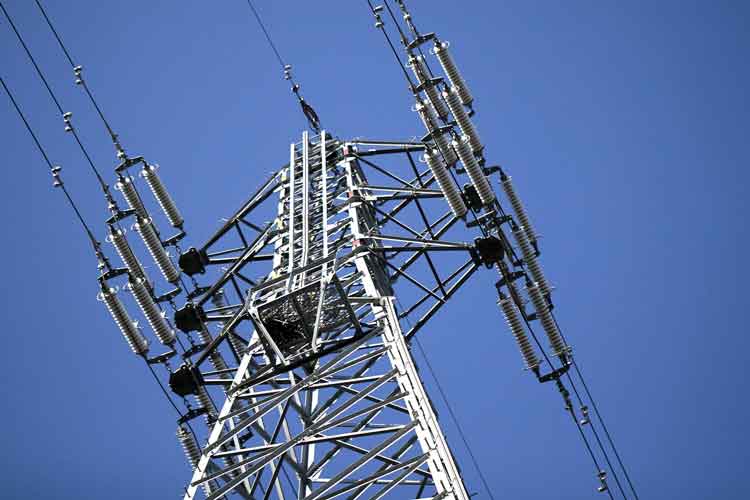
Ford's Washington Meeting: Energy Tariffs and Trade Tensions with U.S
Ontario-U.S. Energy Tariff Dispute highlights cross-border trade tensions, retaliatory tariffs, export surcharges, and White House negotiations as Doug Ford meets U.S. officials to de-escalate pressure over steel, aluminum, and energy supplies.
Key Points
A trade standoff over energy exports and tariffs, sparked by Ontario's surcharge and U.S. duties on steel and aluminum.
✅ 25% Ontario energy surcharge paused before White House talks
✅ U.S. steel and aluminum tariffs reduced from 50% to 25%
✅ Potential energy supply cutoff remains leverage in negotiations
Ontario Premier Doug Ford's recent high-stakes diplomatic trip to Washington, D.C., underscores the delicate trade tensions between Canada and the United States, particularly concerning energy exports and Canada's electricity exports across the border. Ford's potential use of tariffs or even halting U.S. energy supplies, amid Ontario's energy independence considerations, remains a powerful leverage tool, one that could either de-escalate or intensify the ongoing trade conflict between the two neighboring nations.
The meeting in Washington follows a turbulent series of events that began with Ontario's imposition of a 25% surcharge on energy exports to the U.S. This move came in retaliation to what Ontario perceived as unfair treatment in trade agreements, a step that aligned with Canadian support for tariffs at the time. In response, U.S. President Donald Trump's administration threatened its own set of tariffs, specifically targeting Canadian steel and aluminum, which further escalated tensions. U.S. officials labeled Ford's threat to cut off U.S. electricity exports and energy supplies as "egregious and insulting," warning of significant economic retaliation.
However, shortly after these heated exchanges, Trump’s commerce secretary, Howard Lutnick, extended an invitation to Ford for a direct meeting at the White House. Ford described this gesture as an "olive branch," signaling a potential de-escalation of the dispute. In the lead-up to this diplomatic encounter, Ford agreed to pause the energy surcharge, allowing the meeting to proceed, amid concerns tariffs could spike NY energy prices, without further escalating the crisis. Trump's administration responded by lowering its proposed 50% tariff on Canadian steel and aluminum to a more manageable 25%.
The outcome of the meeting, which is set to address these critical issues, could have lasting implications for trade relations between Canada and the U.S. If Ford and Lutnick can reach an agreement, the potential for tariff imposition on energy exports, though experts advise against cutting Quebec's energy exports due to broader risks, could be resolved. However, if the talks fail, it is likely that both countries could face further retaliatory measures, compounding the economic strain on both sides.
As Canada and the U.S. continue to navigate these complex issues, where support for Canadian energy projects has risen, the outcome of Ford's meeting with Lutnick will be closely watched, as it could either defuse the tensions or set the stage for a prolonged trade battle.
Related News

BC Hydro Rates to Rise by 3.75% Over Two Years
British Columbia electricity rate increase will raise BC Hydro bills 3.75% over 2025-2026 to fund infrastructure, Site C, and clean energy, balancing affordability, reliability, and energy security while keeping prices below the North American average.
Key Points
BC will raise BC Hydro rates 3.75% in 2025-2026, about $3.75/month, to fund grid upgrades, Site C, and clean energy.
✅ 3.75% over 2025-2026; about $3.75/month on $100 average bill
✅ Funds Site C, grid maintenance, and clean energy capacity
✅ Keeps BC Hydro rates below North American averages
British Columbia's electricity rates will experience a 3.75% increase over the next two years, following an earlier 3% rate increase approval that set the stage, as confirmed by the provincial government on March 17, 2025. The announcement was made by Minister of Energy and Climate Solutions, Adrian Dix, who emphasized the decision's necessity for maintaining BC Hydro’s infrastructure while balancing affordability for residents.
For most households, the increase will amount to an additional $3.75 per month, based on an average BC Hydro bill of $100, though some coverage framed an earlier phase as a BC Hydro $2/month proposal that later evolved. While this may seem modest, the increase reflects a broader strategy to stabilize the utility's rates amidst economic challenges and ensure long-term energy security for the province.
Reasons Behind the Rate Hike
The rate increase comes during a period of rising costs in both global markets and local economies. According to Dix, the economic uncertainty stemming from trade dynamics and inflation has forced the government to act. Despite these pressures, and after a prior B.C. rate freeze to moderate impacts, the increase remains below cumulative inflation over the last several years, a move designed to shield consumers from the full force of these economic changes.
Dix also noted that, when adjusted for inflation, electricity rates in British Columbia in 2025 are effectively at the same price they were four decades ago. This stability, he argued, underscores the provincial government’s commitment to keeping rates as low as possible for residents, even as operating costs rise.
“We must take urgent action to protect British Columbians from the uncertainty posed by rising costs while building a strong, resilient electricity system for the long-term benefit of B.C.’s energy independence,” Dix said. He also highlighted the government's approach to minimizing the financial burden on consumers by keeping electricity costs well below the North American average.
Infrastructure and Maintenance Costs
The primary justification for the rate increase is to allow BC Hydro to continue its critical infrastructure development, including the Site C hydroelectric project, which is expected to become operational in the coming years. The increased costs of maintaining and upgrading the province's electricity grid also contribute to the need for higher rates.
The Site C project, a massive hydroelectric dam under construction on the Peace River, is expected to provide a substantial increase in clean, renewable energy capacity. However, such large-scale projects require significant investment and maintenance, both of which have contributed to the increased operating costs for BC Hydro.
A Strategic Move for Rate Stability
The provincial government has been clear that the rate increase will allow for a continuation of infrastructure development while keeping the rates manageable for consumers. The 3.75% increase will be spread across two years, with the first hike scheduled for April 1, 2025, reflecting the typical April rate changes BC Hydro implements, and the second for April 1, 2026.
Dix confirmed that the rate hike would still keep electricity costs among the lowest in North America, noting that British Columbians pay about half of what residents in Alberta pay for electricity. This is part of a broader effort by the provincial government to provide stable energy pricing while bolstering the transition to clean energy solutions, such as the Site C project and other renewable energy initiatives.
Addressing Public Concerns
Although the government has framed the increase as a necessary measure to ensure the province's long-term energy independence and reliability, the rate hikes are likely to face scrutiny from residents, particularly those already struggling with the rising cost of living, even as provinces like Ontario face their own Ontario hydro rate increase pressures this fall.
Public reactions to utility rate increases are often contentious, as residents feel the pressure of rising prices across various sectors, from housing to healthcare. However, the government has promised that the new rates will remain manageable, especially considering the relatively low rate increases compared to inflation and other regions where Manitoba Hydro scaled back a planned increase to temper impacts.
Furthermore, the increase comes as part of a broader strategy that aims to keep the overall impact on consumers as low as possible. Minister Dix emphasized that these rate increases were intended to ensure the continued reliability of BC Hydro’s services, without overwhelming ratepayers.
Long-Term Goals
Looking ahead, the province's strategy centers on not only maintaining affordable electricity rates but also reinforcing the importance of renewable energy, while some jurisdictions consider a 2.5% annual increase plan over multiple years to stabilize their grids. As climate change becomes an increasingly pressing issue, BC’s investments in clean energy projects like Site C aim to provide sustainable power for generations to come.
The government’s long-term vision involves building a resilient, energy-independent province that can weather future economic and environmental challenges. In this context, the rate increases are framed not just as a response to immediate inflationary pressures but as a necessary step in preparing BC’s energy infrastructure for the future.
The 3.75% rate increase set for 2025 and 2026 represents a balancing act between managing the financial health of BC Hydro and protecting consumers from higher costs. While the increase will have a modest effect on household bills, the long-term goal is to build a more robust and sustainable electricity system for British Columbia’s future. Through investments in clean energy and strategic infrastructure development, the province aims to keep electricity rates competitive while positioning itself as a leader in energy independence and climate action.
Related News
EF Partner Media
Related Articles From ET Magazine
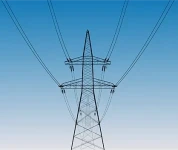
The Role of SCADA in Grid Monitoring and Control
As electric power systems grow in complexity, the need for real-time monitoring and control has never been greater. At the center of this transformation is SCADA—Supervisory Control and Data Acquisition—a system architecture that enables utilities to collect, process, and act on data from remote field devices. From high-voltage substations to distributed energy resources (DERs), SCADA platforms are the nerve center of modern grid operations.
SCADA systems provide utilities with critical operational visibility, allowing for effective grid management, improved reliability, and faster fault detection. As demand increases for automation, decentralized energy integration, and advanced analytics, SCADA’s role continues to expand well beyond its traditional boundaries.
SCADA Architecture: Core Components and Functions
The basic architecture of a SCADA system consists of three primary layers: field devices, communication infrastructure, and the central control system. Together, these layers enable seamless remote monitoring and control of electrical assets across wide geographic areas.
Field Devices: These include Remote Terminal Units
(RTUs) and Programmable Logic Controllers (PLCs) installed at substations, transformers, and switchgear. They interface with physical equipment and sensors to collect real-time data.
Communication Layer: Data is transmitted using telemetry protocols such as DNP3, Modbus, or IEC 60870-5-104 over Ethernet, fiber optics, or radio networks.
SCADA Control Center: A central Human-Machine Interface (HMI) displays data to operators and allows manual or automatic commands to be issued. This interface connects with historian databases, alarm systems, and control logic modules.
SCADA enables grid operators to supervise power flows, manage voltage levels, and respond to equipment failures in near real-time—essential capabilities for ensuring grid stability and minimizing downtime.
SCADA vs DMS vs EMS: Understanding the Differences
While SCADA forms the backbone of real-time operations, it’s often confused with other grid management systems like DMS (Distribution Management System) and EMS (Energy Management System). Each plays a distinct role in utility operations.
SCADA focuses on data acquisition and supervisory control. It provides real-time visibility into field equipment status and telemetry.
DMS builds on SCADA by adding distribution automation, outage management, volt/VAR control, and fault location isolation and service restoration (FLISR) capabilities. It is tailored for the medium- and low-voltage distribution grid.
EMS operates at the transmission level, optimizing power generation, load forecasting, unit commitment, and economic dispatch. EMS integrates market operations and power flow analysis into the control strategy.
In many utilities, these systems are integrated into a unified control platform to provide comprehensive situational awareness and efficient grid operations from generation to distribution.
Integrating DERs into SCADA Systems
As distributed energy resources (DERs)—such as rooftop solar, wind turbines, and battery storage—proliferate, SCADA systems must evolve to manage bi-directional power flows and maintain power quality.
Modern SCADA platforms are increasingly integrated with DER Management Systems (DERMS), enabling operators to:
- Monitor generation from behind-the-meter assets
- Control inverter settings for voltage regulation
- Coordinate dispatch with grid demands
- Ensure grid synchronization and stability
To achieve this, SCADA must support open protocols, real-time communication, and dynamic data modeling to accommodate the variability and intermittency of DERs. This shift is essential for grid modernization and the transition to a decentralized energy ecosystem.
Read the full article at:
https://online.electricity-today.com/electricity-today/q2-2025/

Cybersecurity in Substation and Grid Communications
As power systems become increasingly digitized and connected, the importance of cybersecurity in substation and grid communications has grown exponentially. With the integration of intelligent electronic devices (IEDs), SCADA systems, and remote monitoring, modern substations are now part of a broader cyber-physical infrastructure. While these technologies enable real-time control and improved reliability, they also expose utilities to cyber threats that can disrupt critical services and damage essential assets.
Ensuring the cybersecurity of substation networks is no longer optional—it’s a core requirement for grid stability, national security, and compliance with regulatory standards such as NERC CIP (North American Electric Reliability Corporation Critical Infrastructure Protection).
The Cyber Threat Landscape for Electric Utilities
Substations were once isolated, but the shift to remote access, IoT sensors, and cloud-connected platforms has expanded the attack surface dramatically. Today’s threats include malware, ransomware, insider threats, and state-sponsored attacks targeting the operational technology (OT) layer.
Because substations form the backbone of the transmission and distribution (T&D) network, any cyber incident can lead to blackouts, equipment failures, or cascading effects across the grid. Moreover, attackers often seek to exploit legacy devices, poor segmentation, or insecure remote connections to move laterally within the system.
NERC CIP Compliance: A Baseline for Protection
To address these growing risks, regulatory frameworks like NERC CIP have been developed to enforce a minimum standard of protection for critical infrastructure. NERC CIP governs the cybersecurity of bulk electric system assets across the U.S. and parts of Canada.
NERC CIP requires utilities to:
- Identify and categorize critical cyber assets
- Implement access control and authentication protocols
- Maintain audit trails and perform log analysis
- Conduct vulnerability assessments and incident response planning
Ensure physical and cyber perimeter security
Although NERC CIP provides a strong compliance foundation, it must be supplemented by real-time, adaptive defenses to address evolving threats and zero-day vulnerabilities.
Real-Time Threat Detection and Network Monitoring
Modern substations must go beyond static defenses and implement real-time threat detection capabilities. This includes the deployment of intrusion detection systems (IDS), network security monitoring (NSM) tools, and behavioral analytics platforms tailored for industrial control systems (ICS).
These tools enable operators to:
- Monitor communication patterns between IEDs, RTUs, and SCADA components
- Detect anomalies such as unexpected protocol usage or lateral movement
- Set automated alerts for known attack signatures or abnormal traffic volumes
- Analyze network flows in segmented OT zones
- Enhanced network visibility is critical, particularly when dealing with IEC 61850 protocols and other substation-specific communications that differ from traditional IT systems.
In addition, time-stamped logging, centralized SIEM integration, and forensic capabilities allow security teams to trace and respond to incidents rapidly, minimizing downtime and reducing impact.
Read the full article at:
https://online.electricity-today.com/electricity-today/q2-2025/

Understanding the IEC 61850 Protocol in Substation Automation
https://online.electricity-today.com/electricity-today/q2-2025/

Understanding the IEC 61850 Protocol in Substation Automation
Electricity Today T&D Magazine Subscribe for FREE

- Timely insights from industry experts
- Practical solutions T&D engineers
- Free access to every issue
EF T&D Live Online Forums
Register for our FREE T&D Live Online Forums and join our live expert-led webinars on the latest electrical industry topics.- Industry expert insights on trending technologies
- Free access to recorded webinar presentations
- Downloadable PDF presentations
- Convenient viewing on your schedule—no attendance required








